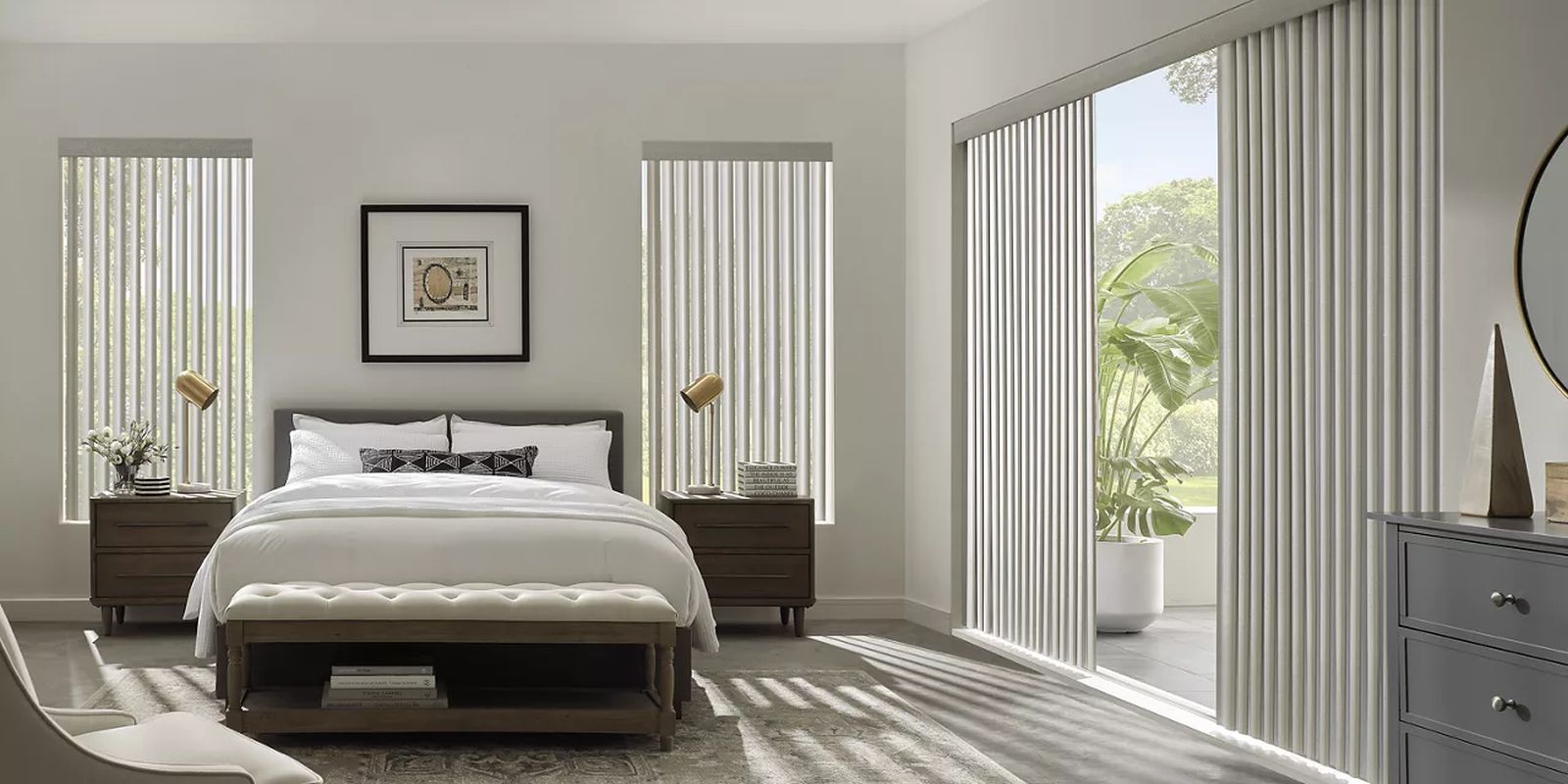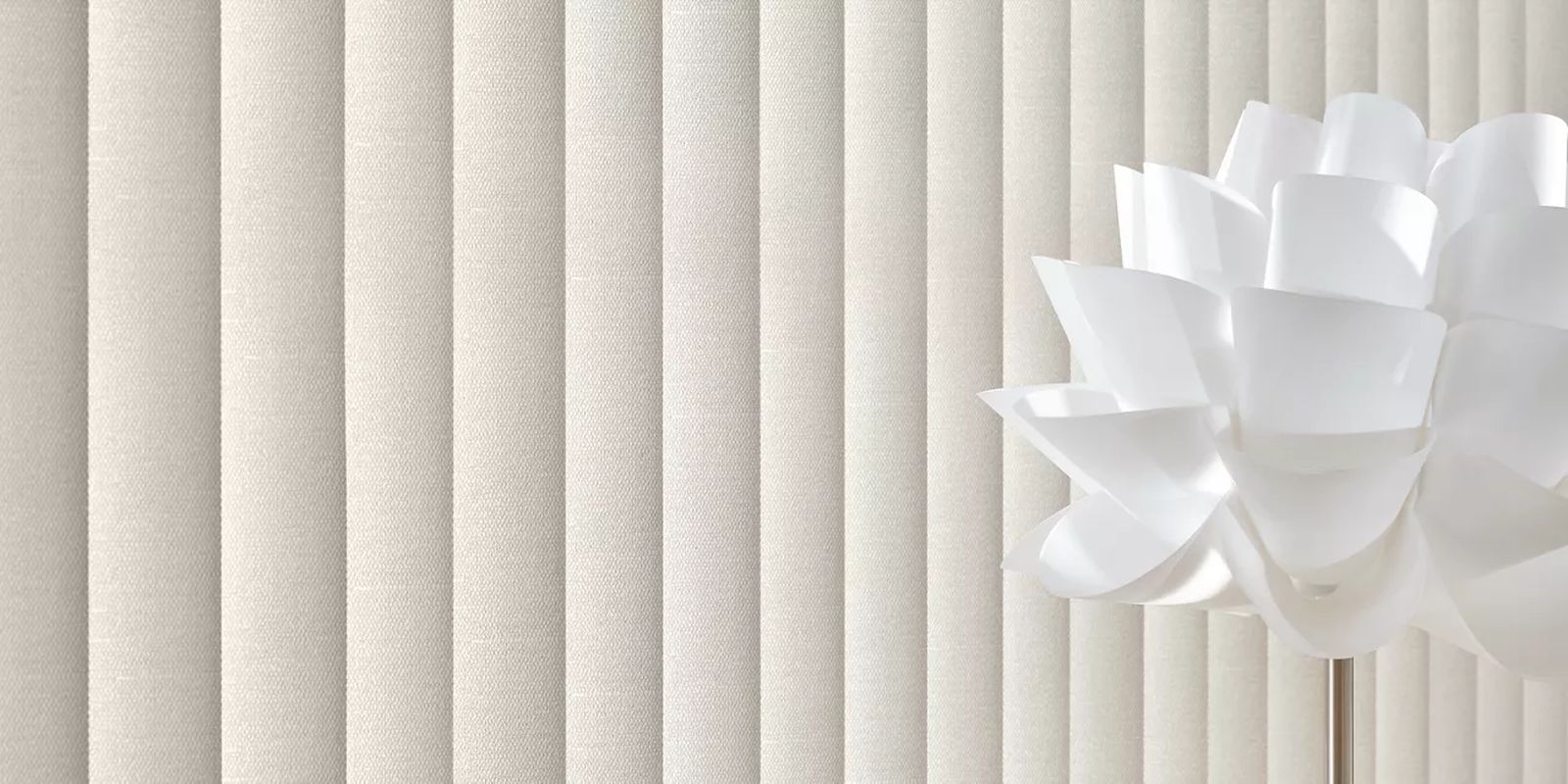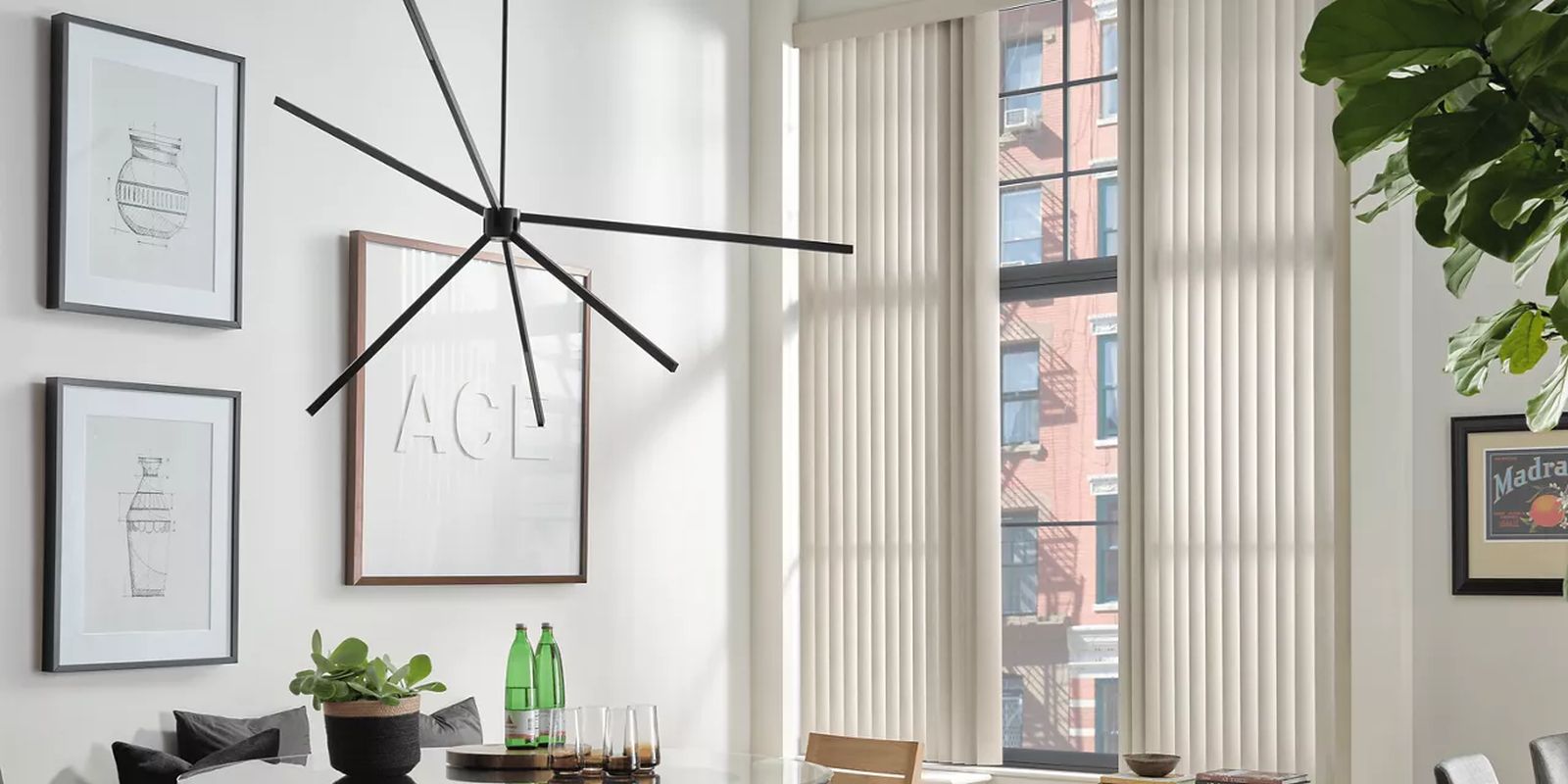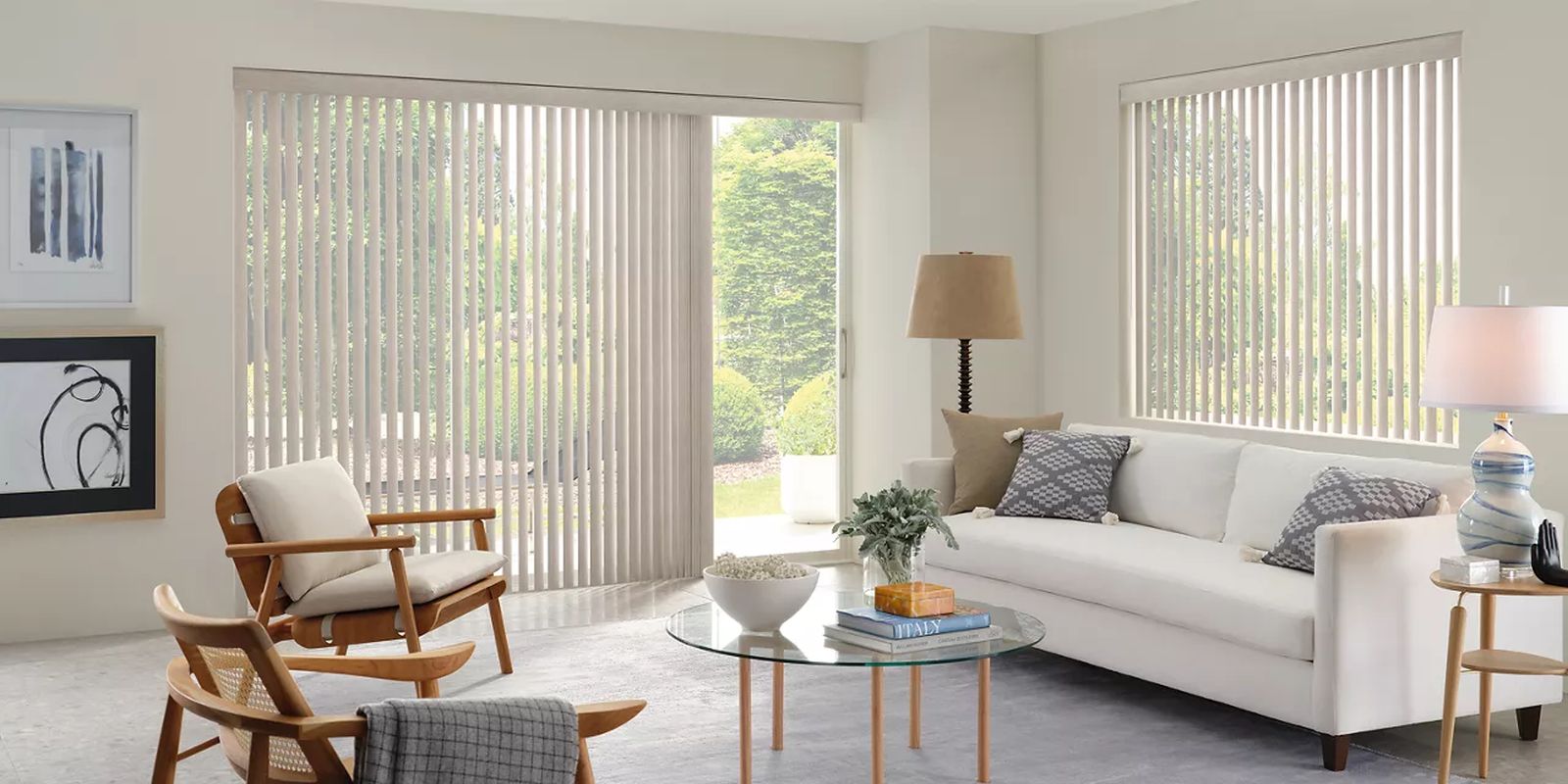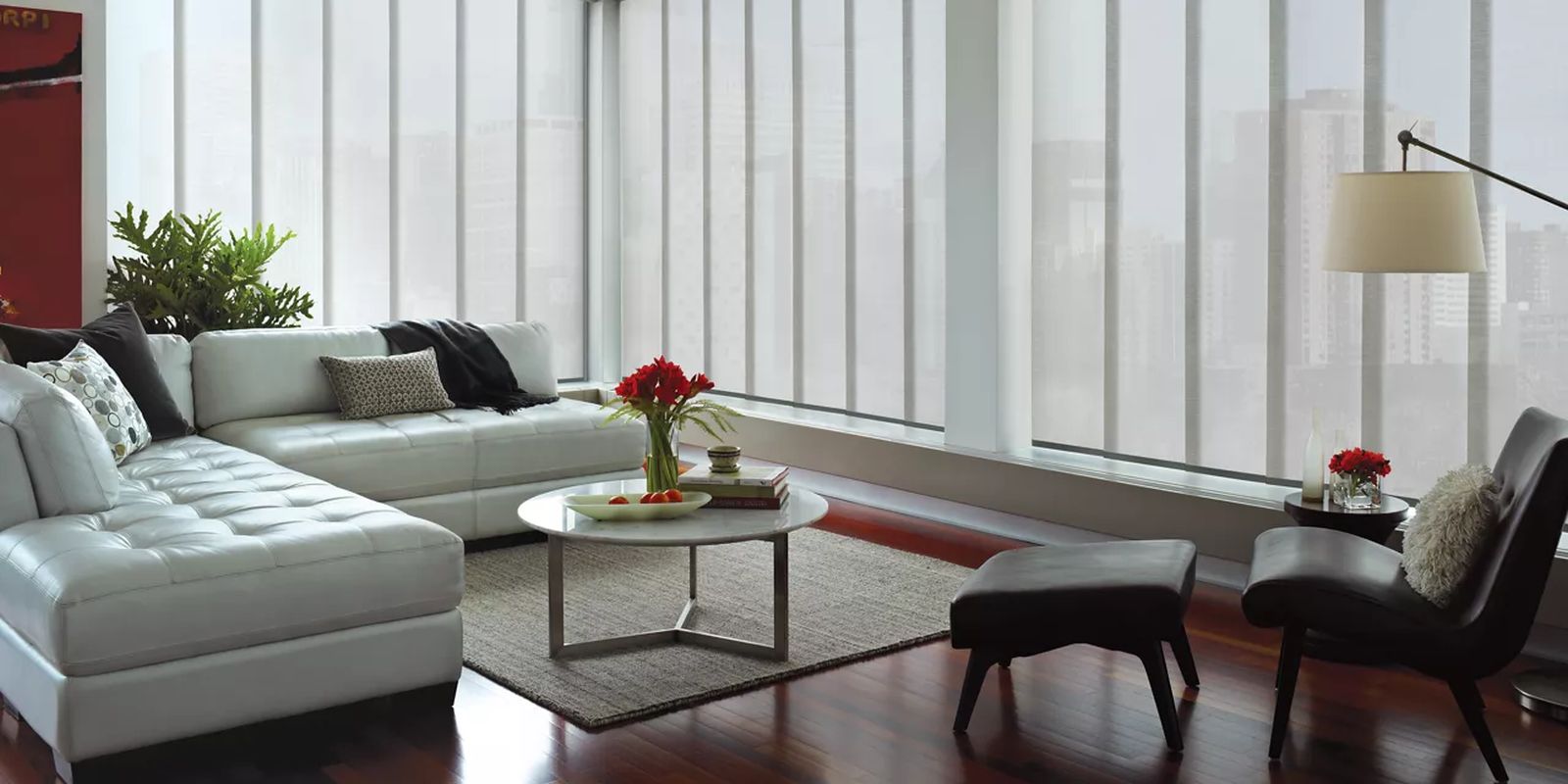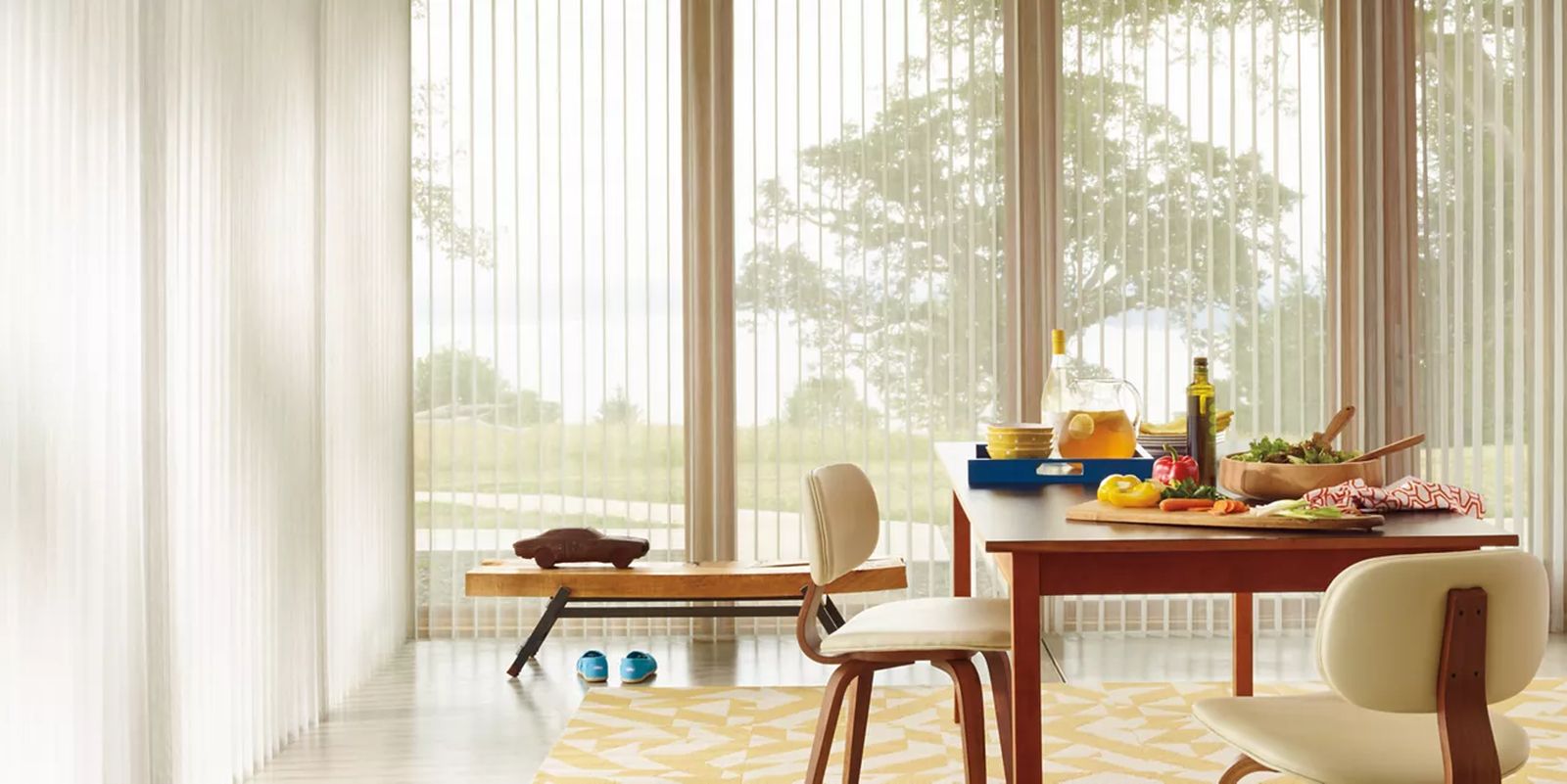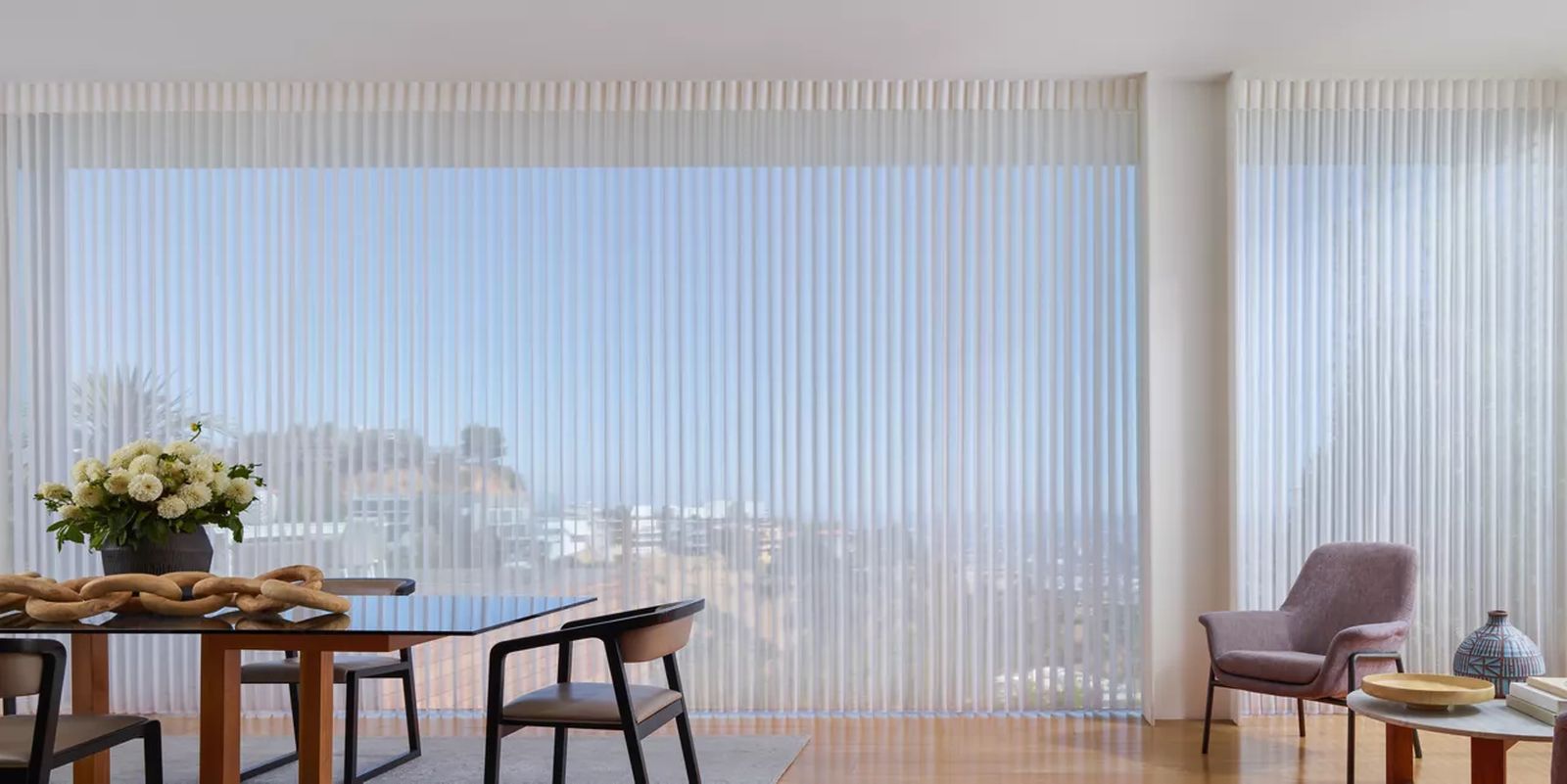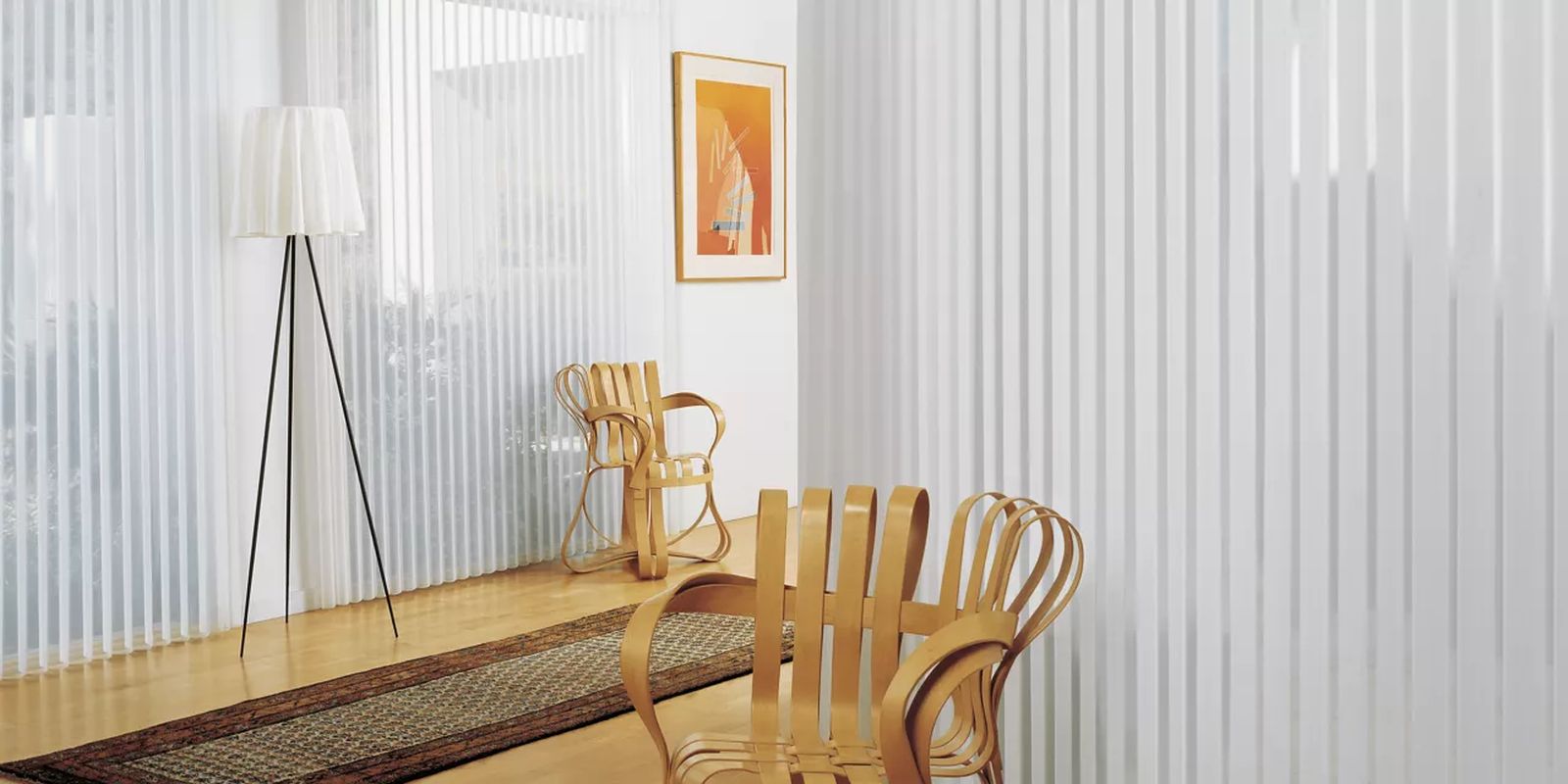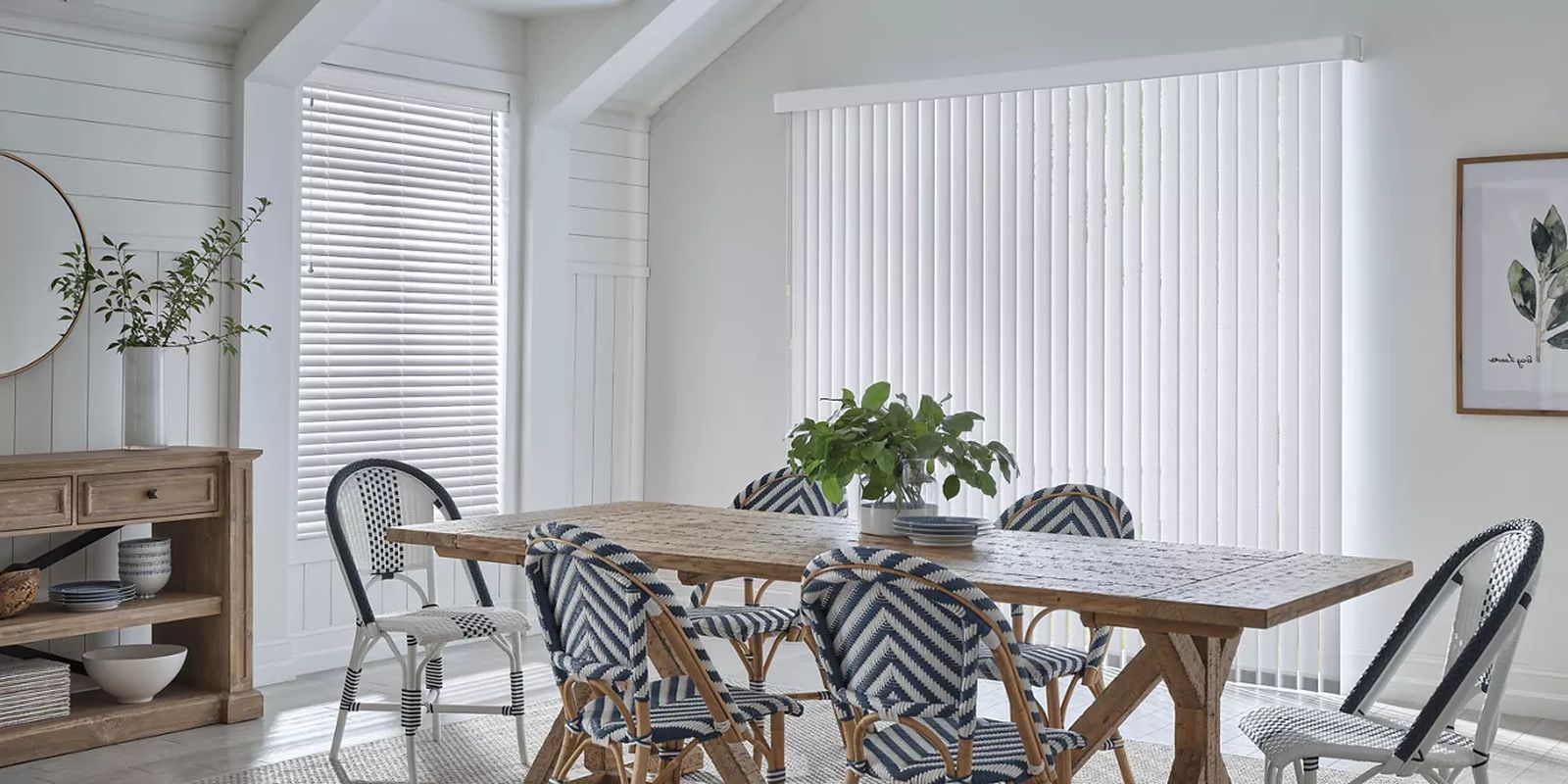
Unlike horizontal blinds, vertical blinds are less likely to collect dust because they stand vertically. Since they draw to the side rather than lifting and lowering, they are easier and faster to operate. They operate best on patio doors and sliding windows that slide from side to side. In the 1970s there were few choices of fabric- usually beige or white, which had to have stiffener embedded to prevent fraying, rather like on roller blinds fabric but using a thicker textile.
Vertical blinds became available in flat plastic (PVC), fabric, embossed PVC, also S-curved slats. A more modern modification is to offer them with wood trim at the top and bottom- sometimes midway as well- and these are usually described as ‘Japanese Vertical blinds’ because they are often coordinated with Japanese style Shoji blinds using the same timber. Vertical blinds were most popular during the 1990s, since then sales have slowed as they lost popularity with a younger generation.
Stationary vertical blinds are hung in the doorways of some homes and businesses which generally leave the door open. Movement of the blind may signal a change in airflow, or someone entering the doorway. More commonly, however, these vertical blinds are made of thick plastic. In the cold rooms of food businesses, this slows the heat leakage into the cold room. In warmer climates, vertical blinds discourage flies and some other insects from entering the building. In certain areas window blinds are used to disguise the fact that offices have PCs in them and are used as a burglary deterrent.
Custom Blinds, Shades & Curtains
This gallery has examples some of the styles we can design and build for you. There are many more to choose from. Contact us for an appointment to go over your options.


